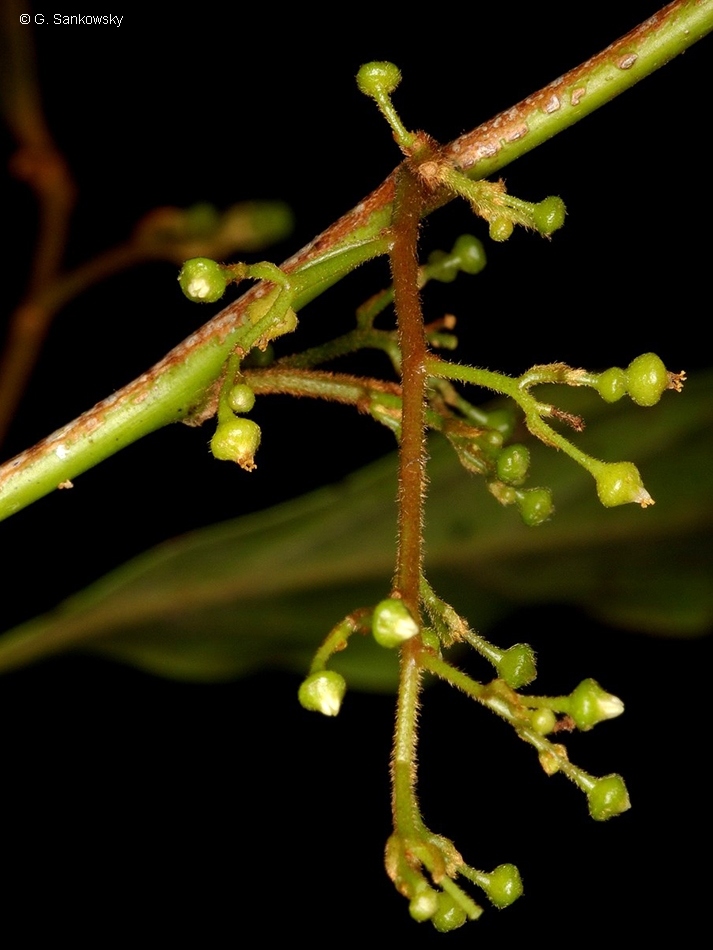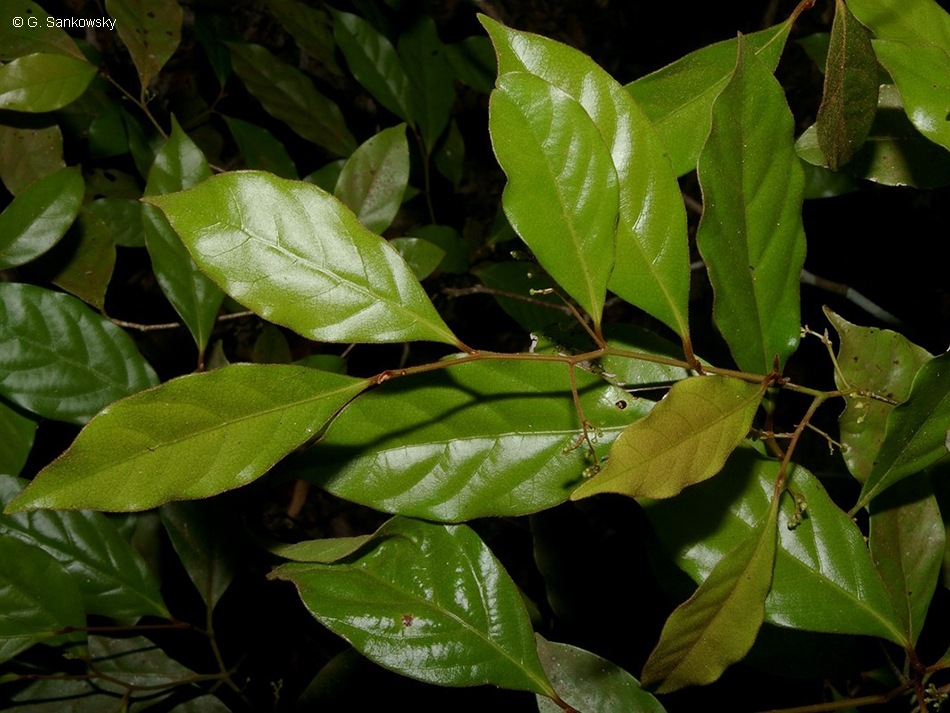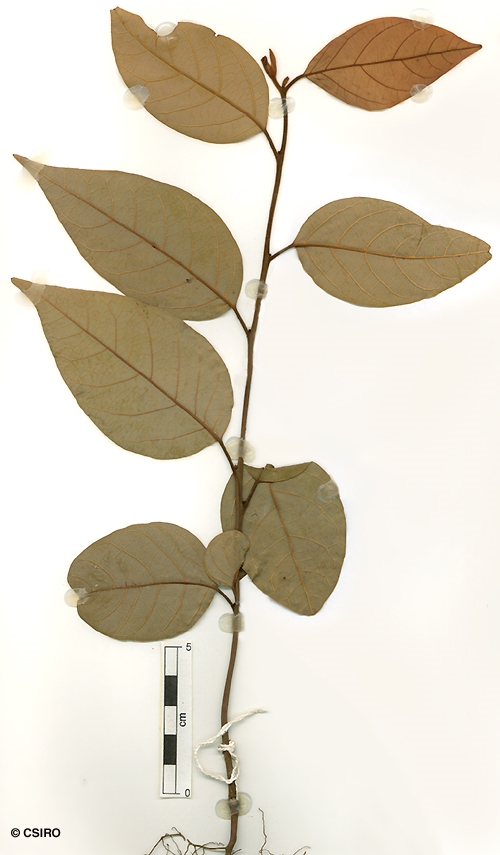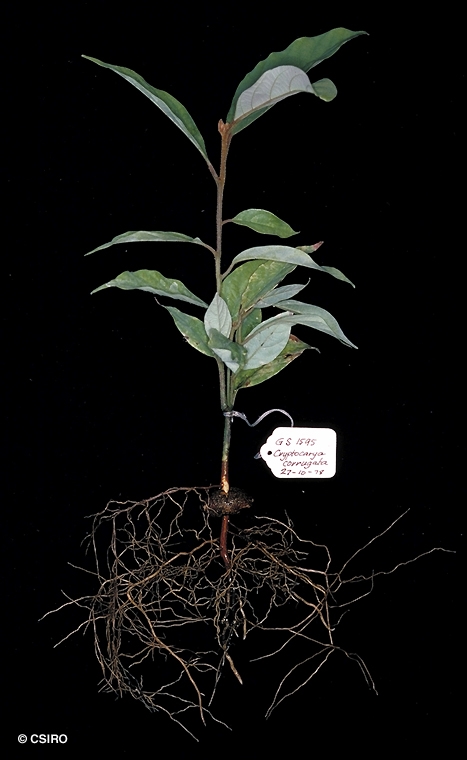Australian Tropical Rainforest Plants - Online edition
Cryptocarya corrugata C.T.White & W.D.Francis








White, C.T. & Francis, W.D. (1926) Proceedings of the Royal Society of Queensland 37: 165. Type: Eungella Range, about 40 miles west of Mackay, October 1922, W.D. Francis (fruiting specimens, type).
Bull's Breath; Corduroy Laurel; Corduroy; Laurel, Corduroy; Oak Walnut; Walnut, Oak; Washing-board Tree; Acidwood
Sapwood surface corrugated. Blaze odour like sugar-cane (Saccharum officinale). Roughly circular depressions visible on the bark where flakes have fallen off. A cream or pale brown layer generally visible beneath the subrhytidome before the first section of the outer blaze.
Twigs fluted, clothed in tortuous, brown, erect, quite persistent hairs. Leaf blades about 3.5-11 x 2-5.5 cm, slightly glaucous on the underside, clothed in tortuous, brown, erect hairs when young but eventually becoming almost glabrous. Midrib and main lateral veins depressed on the upper surface. Reticulate veins raised on the underside of the leaf blade. Petioles flat or channelled on the upper surface. Oil dots visible with a lens.
Fruits wider than long, sometimes bilobed, about 15-22 x 22-34 mm. Cotyledons yellowish, sometimes cream.
First pair of leaves lanceolate to ovate, about 65-80 x 30-47 mm, glaucous on the underside. At the tenth leaf stage: leaf blade hairy on the upper surface at least along the midrib; oil dots small, visible only with a lens. Petiole, stem and terminal bud densely hairy. Seed germination time 23 to 59 days.
Fruit eaten by Cassowaries and Fruit Pigeons. Cooper & Cooper (1994).
This species produces millable logs and the sawn timber is marketed as Corduroy Laurel, a useful, non-durable, general purpose timber, not very popular in the timber trade. Wood specific gravity 069-0.80. Hyland (1989).





